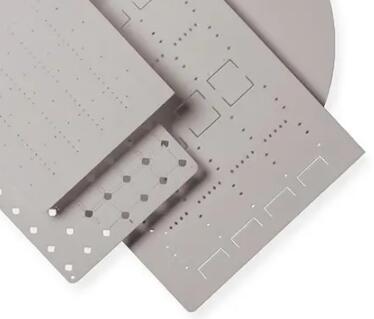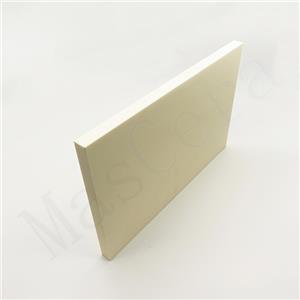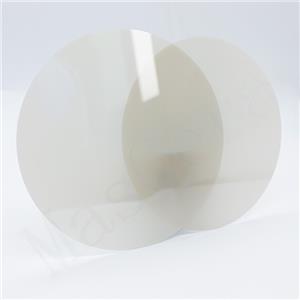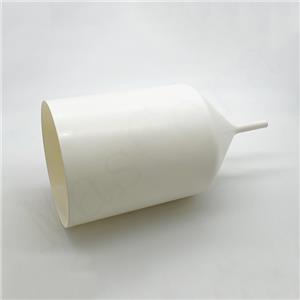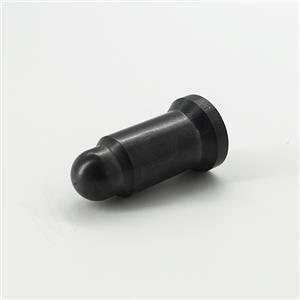Seria Podłoże Ceramiczne - Materiały do Opakowań Elektronicznych Podłoża Ceramiczne
The process from chips to devices and systems is called electronic packaging. Chips can only become complete devices with distinctive features after being packaged. The main functions of electronic packaging include mechanical protection, electrical interconnection, heat dissipation and heat matching, and light guiding to reduce light loss and improve light efficiency. Therefore, as the substrate for electronic device packaging, it needs to have high strength, high thermal conductivity, good heat resistance, high insulation, thermal matching with chip materials, high reflectivity and other properties. Currently, ceramic materials have the above characteristics and have been widely used in semiconductor lighting, lasers and optical communication, aerospace, automotive electronics, deep sea drilling and other fields.
Ceramic substrates, also known as ceramic circuit boards, include ceramic substrates and metal circuit layers. Common materials for electronic packaging ceramic substrates include aluminum oxide (Al2O3), aluminum nitride (AlN), silicon nitride (Si3N4), and beryllium oxide (BeO). Below are their properties and technical characteristics.
| ITEMS | Unit | 96% Al2O3 | 99.6% Al2O3 | AlN-170 | AlN-190 | Si3N4 |
| Color | --- | White | White | Light Grey | Light Grey | Dark Grey |
| Density | g/cm3 | 3.72 | 3.9 | 3.33 | 3.32 | 3.2 |
| Flexural Strength (@25℃) | Mpa | 380 | 500 | 382 | 335 | 420 |
| Thermal Conductivity (@25℃) | W/M.K | |||||
| Thermal Expansion Coefficient(20-300℃) | 10-6mm/℃ | 6.9 | 6.9 | 2.8 | 2.8 | 4.6 |
| Electrical Resistivity (@25℃) | Ω.Cm | 10^14 | 10^14 | 10^14 | 10^14 | 10^14 |
| Dielectric Constant (@1MHz, 25℃) | --- | 9 | 9.9 | 8.56 | 8.56 | 8 |
| Breakdown strength | KV/mm | 17 | 17 | 18.45 | 18.45 | 15 |
| Surface roughness | Ra(μm) | 0.2-0.4 | 0.2-0.4 | 0.3-0.5 | 0.3-0.5 | 0.2-0.6 |
Mascera's main parameters for producing ceramic substrates
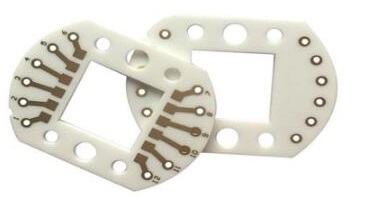 Aluminum oxide is generally made of 96% or 99.6% aluminum oxide as the ceramic substrate, and its color is white. Aluminum oxide ceramics have the advantages of rich raw material sources, low price, high insulation, heat resistance, chemical corrosion resistance, and high mechanical strength. It is a ceramic substrate material with good comprehensive performance, accounting for more than 80% of the total amount of ceramic substrate materials. However, due to its relatively low thermal conductivity and high thermal expansion coefficient, it is generally used in automotive electronics, semiconductor lighting, electrical equipment and other fields.
Aluminum oxide is generally made of 96% or 99.6% aluminum oxide as the ceramic substrate, and its color is white. Aluminum oxide ceramics have the advantages of rich raw material sources, low price, high insulation, heat resistance, chemical corrosion resistance, and high mechanical strength. It is a ceramic substrate material with good comprehensive performance, accounting for more than 80% of the total amount of ceramic substrate materials. However, due to its relatively low thermal conductivity and high thermal expansion coefficient, it is generally used in automotive electronics, semiconductor lighting, electrical equipment and other fields.
Aluminum nitride material is light gray and belongs to the hexagonal crystal system. It is a covalent compound with the zincblende structure unit of AlN4. This structure determines its excellent thermal, electrical and mechanical properties. The thermal conductivity of aluminum nitride ceramics is 6-8 times that of aluminum oxide ceramics, but the thermal expansion coefficient is only 50% of it. In addition, it has high insulation strength, low dielectric constant, and good corrosion resistance. Except for its higher cost, the comprehensive performance of aluminum nitride ceramics is superior to that of aluminum oxide ceramics, making it an ideal electronic packaging substrate material, especially suitable for fields with high thermal conductivity requirements.
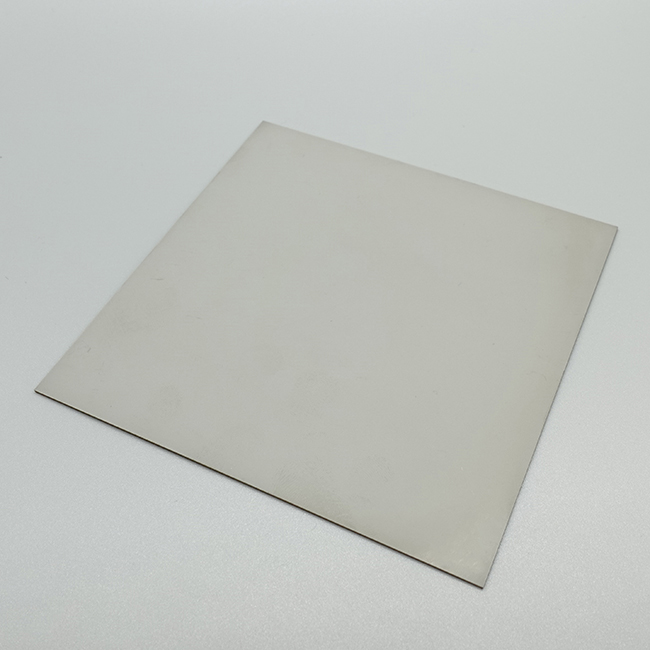
4.Beryllium Oxide ceramic
BeO has a low density and a wurtzite-type and strong covalent bond structure, and both the powder and the substrate are white. The thermal conductivity of BeO is several times that of Al2O3, making it suitable for high-power circuits and has good comprehensive properties. However, due to the toxicity of BeO powder, there are environmental problems, and it cannot be produced in many countries. The sintering temperature of BeO can reach above 1900°C, making the production cost high; the thermal conductivity of BeO decreases with the increase in temperature, which limits the promotion and application of beryllium oxide. However, in certain high-power, high-frequency semiconductor devices, aerospace electronic equipment, and satellite communications, BeO ceramics are still used as substrate materials to pursue high thermal conductivity and ideal high-frequency characteristics.
5.Others
In addition to the aforementioned ceramic materials, silicon carbide (SiC), boron nitride (BN), and others can also be used as ceramic substrate materials. Among them, the thermal conductivity of SiC ceramic single crystal material can reach 490 W/(m·K) at room temperature, but the thermal conductivity of SiC polycrystalline is only 67 W/(m·K). In addition, the dielectric constant of SiC material is 40, which is four times that of AlN ceramics, limiting its high-frequency application. BN material has good comprehensive properties, but as a substrate material, it does not have prominent advantages, and its price is expensive, and the coefficient of thermal expansion does not match that of semiconductor materials.
Overall, ceramic substrates play a crucial role in power device packaging and are key electronic materials that are the focus of research and development in various countries. Mascera produces high-quality ceramic substrates using alumina, aluminum nitride, and silicon nitride as materials, and has introduced laser equipment on the production line for laser cutting, scribing, and drilling according to customer requirements. The size accuracy is high, the processing speed is fast, and the product stability is good. For surface treatment, polishing or DPC&DBC metallization can also be provided. If you want our quotation, please send us your design or requirement details.

